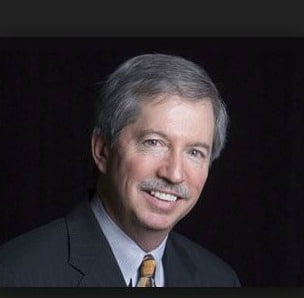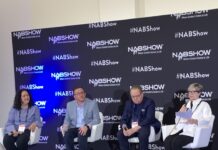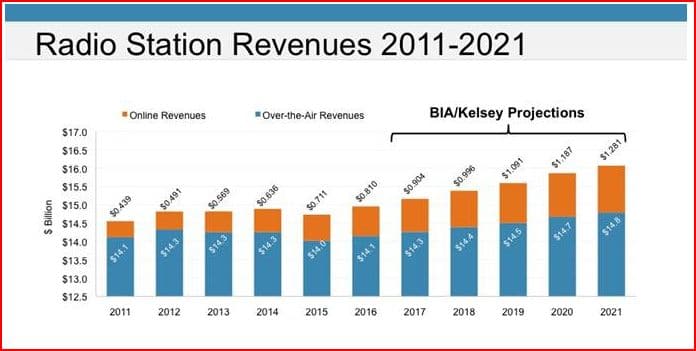
The NAB was quick to defend radio with a detailed response to the Miller report. NAB Executive Vice President of Communications, Dennis Wharton took apart Miller’s findings, point by point, calling the report “silly” and highlighting how radio continues to thrive with millenials and remains relevant after nearly 100 years in existence. Here’s exactly what Wharton had to say.
“Since its inception, critics of broadcast radio have mistakenly forecast its demise. This silly Steinhart report – backed by SoundExchange (a group bankrolled in part by giant record labels pushing a radio ‘performance tax’) – continues that tradition. Contrary to the report’s conclusions, millennials are NOT abandoning local radio. According to Nielsen, millennials are listening in greater numbers than ever before, not just to over-the-air programming, but also to local radio on digital platforms. Every week, 265 million Americans tune into hometown radio stations for their favorite songs, to discover new artists, and to hear legacy artists whose careers have been sustained by local radio airplay.
“Most importantly, radio’s unique role as a local medium allows stations to provide listeners with relevant news, community programming and lifeline emergency weather information – day in and day out. Radio stations are committed to providing consumers with our unique service wherever they are, whether online, on mobile devices, on smart speakers or in the connected car. Make no mistake – local radio will be powerful entertainment medium for decades to come.”
Here’s how Wharton took apart Miller’s report point-by-point:
Steinhart claim: AM/FM radio is in the midst of a massive drop off as a music discovery tool by younger generations.
Wharton: A study by Nielsen in 2015 found that 59% of millennials chose AM/FM radio and satellite radio as their preferred choice for discovering new music. In addition, 87.9% of Americans aged 12-17 turn to radio each weekly, and they spend nearly 10 hours a week listening to local radio.. Even when they use streaming services to find new songs, younger generations continue tuning into radio to listen to their favorite music.
Steinhart claim: By 2020, 75% of new cars are expected to be “connected,” breaking radio’s monopoly on the car dashboard and relegating AM/FM to just one of a series of audio options behind the wheel.
Wharton: Broadcasters understand that the connected car, and self-driving cars, will offer challenges and opportunities for radio stations to retain our supremacy on the in-car dashboard. For example, we’ve devoted the opening session of the 2017 Radio Show to the connected car and exploring the opportunities surrounding these trends. Yet, we believe the relationship between radio and the automobile is an enduring one, and consumers seem to agree. Just take a look at the blowback against auto manufacturers when they removed AM radio from electric cars because of interference concerns. There is a reason three-fourths of all adults tune into the radio in their vehicle every week.
Steinhart claim: Year over year, radio advertising revenue dropped 4% while digital/mobile spend was up 11% according to Standard Media Index’s Q2 2017 report, showing that even in local advertising, radio cannot sustain its dominance.
Wharton: Radio revenues are cyclical and vary widely market-by-market. As studies have shown, radio actually offers advertisers the highest return on investment out of any media platform. Factor in the controversy surrounding the waste, fraud and abuse in the online digital advertising space, radio has a unique opportunity in front of it. You now have execs at major advertisers expressing concern with fraudulent airplay, ads ending up on questionable websites, and consumers paying no attention to online ads. Advertisers will find none of that on broadcast radio.
Steinhart claim: Notwithstanding the digital radio platform developed by iHeartRADIO, for which the payment of a performance royalty is required, broadcast radio does not pay a sound recording performance royalty to artists and rights owners. Economists have concluded that innovation has stalled out, because, in general, the business remains focused on driving EBITDA through reduced content cost (no sound recording royalty obligation) as a result of government price suppression (to $0) by current public policy.
Wharton: Currently, 206 Members of the House of Representatives and 23 Senators agree with their hometown broadcasters that there is a mutually beneficial relationship between local radio and the music industry and have signed onto a resolution opposing a performance royalty.
As a result, radio’s importance to music industry revenue is rapidly diminishing. In a business now driven by access to music versus ownership, record labels have shifted their focus to digital platforms to introduce new artists and monetize back catalog.
Wharton: Apparently, no one told the record labels this. Radio continues to play an important role for the music industry in helping new artists get discovered and established artists remain in the limelight. Countless artists and record label executives have praised local broadcast radio for its role in exposing the public to new music, driving album and merchandise sales, and filling concert venues.







Great job Dennis. “Silly” is right!